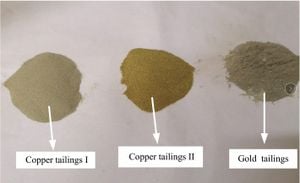Research has revealed promising strategies to bolster the effectiveness of immunotherapy for treating triple negative breast cancer (TNBC), particularly through the combination of anti-PD-1 antibodies and balixafortide, a novel CXCR4 inhibitor.
The study investigated this combination therapy using immunocompetent mouse models of TNBC, with results indicating notable reductions in tumor size and improved survival rates. By targeting the CXCR4 receptor, which is known to create immunosuppressive tumor environments, researchers hope to reinvigorate the body’s immune response against tumors.
"Adding balixafortide to anti-PD-1 increased numbers of tertiary lymphoid structures (TLS), which are associated with favorable immune responses to cancer treatment," the authors noted. This combination also showed significant effects on T cell activity, reducing exhaustion markers which typically hinder immune response efficacy.
TNABC patients traditionally see limited benefits from immunotherapy, with response rates hovering between 8% and 20%. This highlights the need for innovative solutions to improve patient outcomes, as current therapies leave many patients without viable treatment options.
CXCR4 and its chemokine ligand CXCL12 play substantial roles in the tumor immune microenvironment by regulating immune cell trafficking and suppressive signals. The present study revealed detailed mechanisms by which CXCR4 inhibition can alter both the tumor microenvironment and immune system's response. The preclinical findings support earlier research showing enhanced efficacy when combining checkpoint inhibitors with CXCR4 antagonists.
Single-cell RNA sequencing from the study demonstrated reduced signatures of immunosuppressive myeloid cells and increased markers of effective T cell responses following combination therapy. This shift indicates potential pathways to circumvent cancer immune evasion tactics, which have long presented barriers to successful therapeutic interventions.
"These studies demonstrate how combining inhibition of CXCR4 with anti-PD-1 enhances responses to checkpoint inhibitor immunotherapy in TNBC," the authors asserted, emphasizing their findings as promising grounds for future clinical trials. The findings shed light on how CXCR4 functions contribute to immune exclusion and the overall poor responses seen with existing treatments.
Current research led to the hypothesis underpinning the therapy approach: could the disruption of CXCR4 signaling facilitate improved immune infiltration and response? This question yielded positive outcomes, as combining the inhibitors significantly curtailed the growth of tumors compared to standalone therapies.
Further studies are indicated to explore how these activated immune environments sustain their anti-tumor efficacy over time. The article’s authors strongly advocate for future clinical trials to test these preclinical models against human cancers as the next step toward refining immunotherapy strategies.
This combination treatment provides hope for enhancing TNBC patient responses, where traditional immunotherapy has shown limited success. The work may redefine treatment paradigms, emphasizing the importance of targeting specific pathways to optimize immune response and minimize disease impact.



